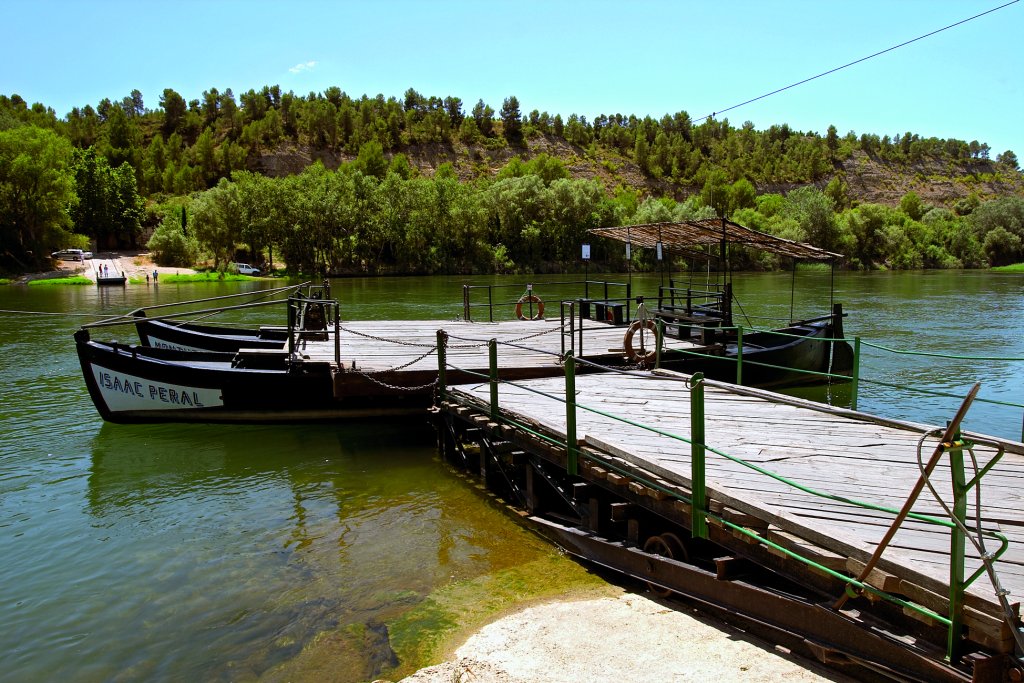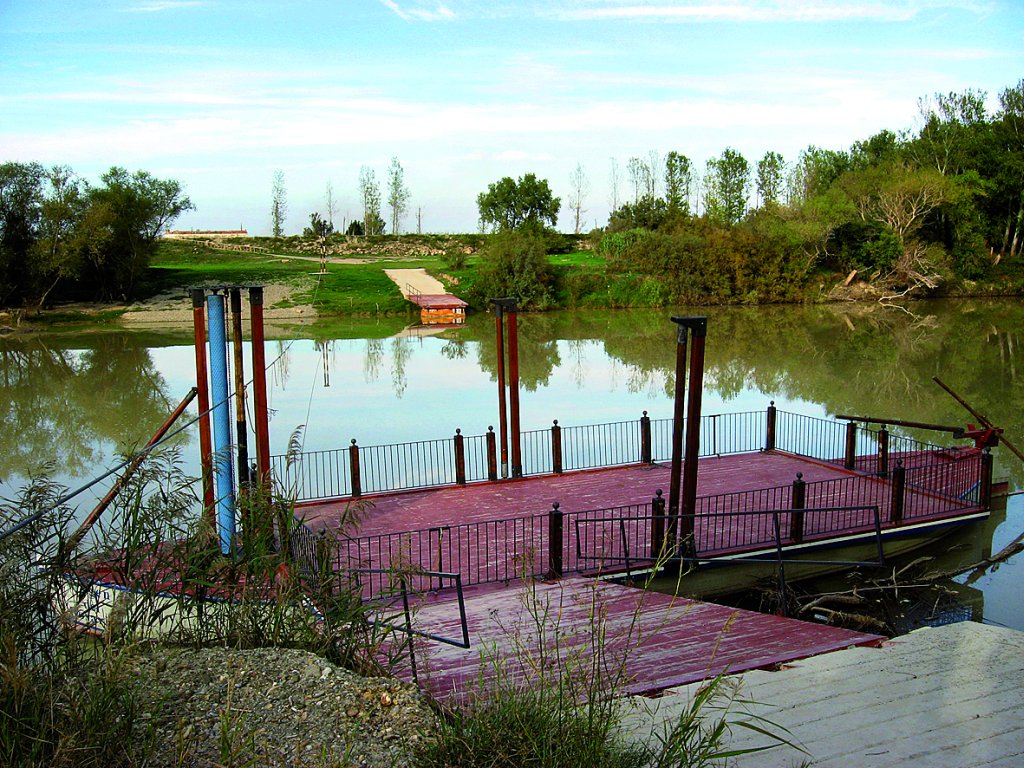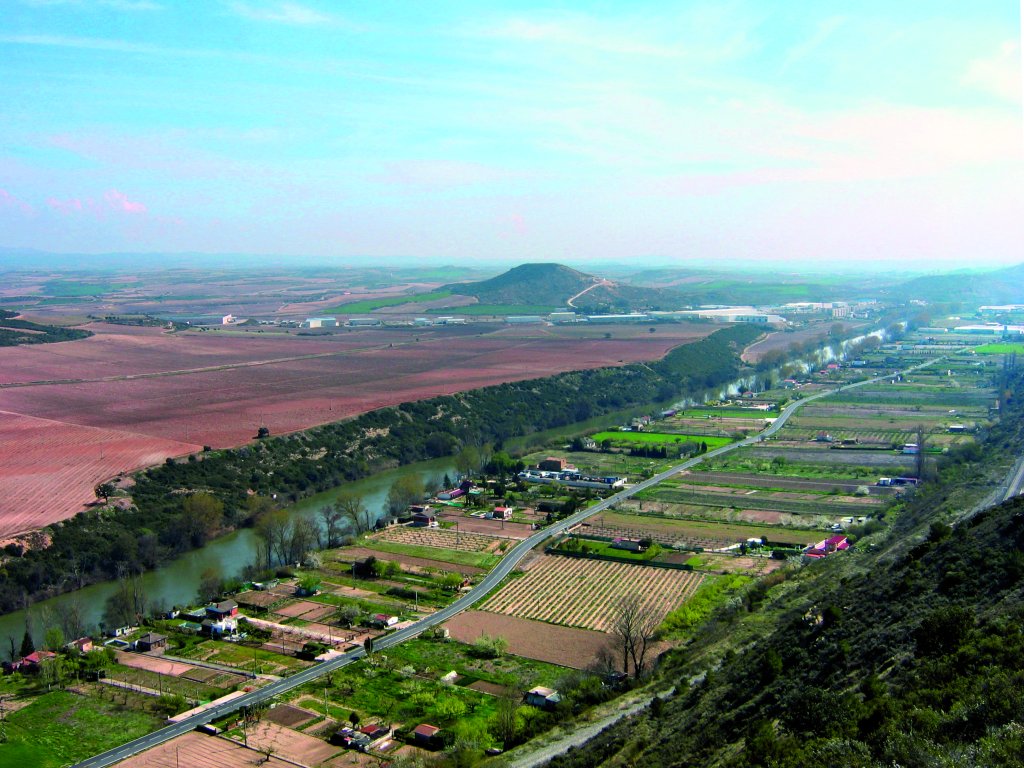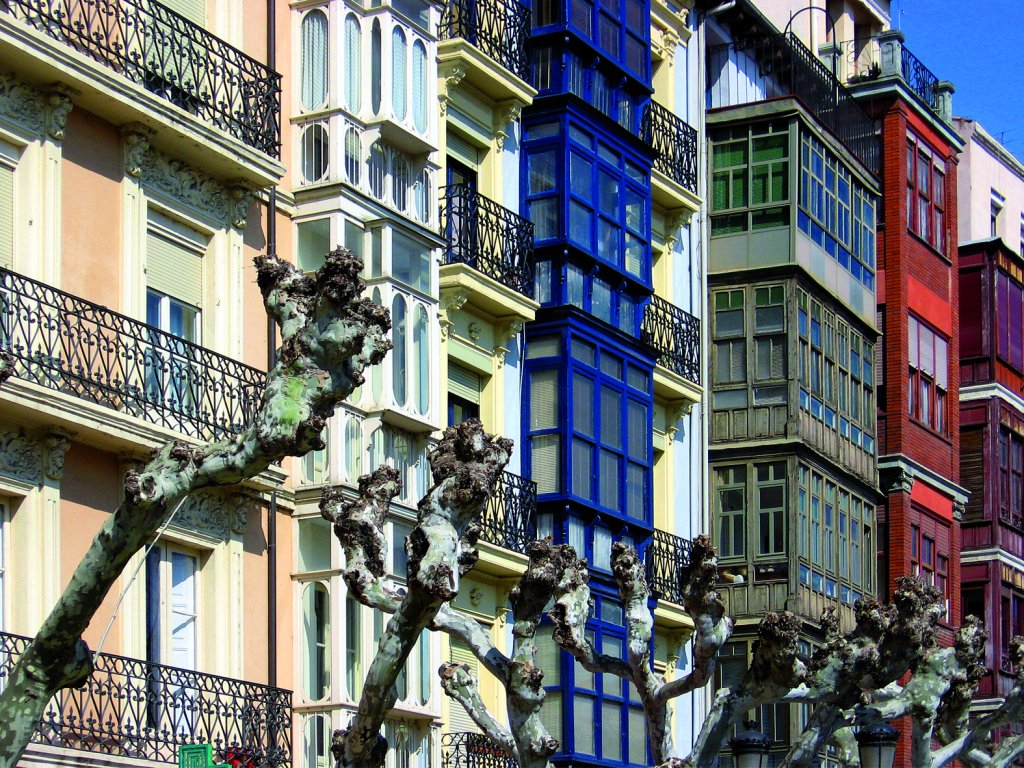Stage 15.1: Cenicero - Logroño
Description

From the Plaza de la Iglesia, the route crosses the bridge and turns left onto the first street, where several wineries are located. The railway station is at the end of the street. The route runs parallel to the railway tracks, leaving two level crossings to the left. A vast expanse of vineyards are scattered throughout the route. Both Cenicero (west) and Elciego (north) can be seen in the distance.
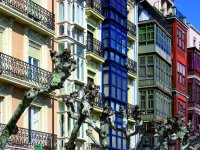
The dirt road turns into a paved road and continues through “El Tejar” industrial estate, near the N-232. In the back of a winery, the trail turns to the left and crosses a level crossing. The dirt road crosses Buicio irrigation ditch and reaches the tree-covered island of Buicio and its weir (7.9 km, 1hr 40min).
The treed island of Buicio, situated on a meander in the Middle Ebro, is populated by riparian undergrowth. The island, with an extension of 30 ha, is protected as an Integral Reserve.
This Reserve, populated by insects, amphibians, fish, reptiles and various bird species, is the habitat of an important plant community. Next to the weir, between the canal and the power station, is a landscaped area which can be accessed by a dirt road to the left.
The Ebro River valley meanders through a floodplain landscape as it ventures into Logroño. The Ebro Nature Trail continues straight ahead, past a level crossing, and climbs a small hill along a paved track. On a downhill course, the route turns off twice to the left and traverses the fertile plain to arrive at Fuenmayor (106 km, 2hr 20min).
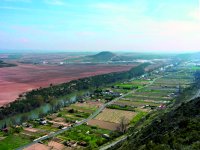
Fuenmayor is situated in a narrow valley formed by Mayor Brook, before discharging into the Ebro. In addition to its wineries, the town also has 16th and 17th century “palazzos”, the parish church of Santa María (16th C.), the shrines of Carmen and Cristo, and the chapel of Hijas de la Cruz.
After passing through the town, the route heads along a street parallel to La Puebla de Labarca road (LR-251), along a farm track through vineyards and agricultural estates. Disregarding various offshoot roads, including “Pasada de La Puebla”, the route come upon a road in front of a winery, turns right towards the Ebro, and follows a 360º bend along Mayor Brook, passing under the railway bridge to access Remolino recreation area. The town of La Puebla de Labarca can be seen on the opposite side, nestled into the escarpments.
The route continues parallel to the Ebro along a paved track, through vineyards and alongside the railway line, to El Cortijo Dam and its sluice gates. Past the dam, the route turns right and passes through a railway tunnel, and begins to climb towards El Cortijo (17.9 km, 3hr 55min), a town with a 16th century church that is accessed through Egido Street.
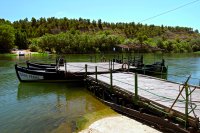
The houses of this Logroño neighbourhood sit on a shoulder of Sierra del Castillo, suspended over the Ebro, where the curved lobe of the Assa meander ends. After cutting into the escarpment where the town sits, the river comes to a stretch of free meanders that extend beyond Velilla de Ebro (Saragossa).
From El Cortijo, the route continues along a paved road behind the library. The road runs along the escarpments of the Ebro to a track that starts to the left, past the water tanks to Logroño's landfill -the slope of the Isla- with El Castillo (554 m) to the right. This stretch offers panoramic views of the meandering Ebro and the city.
The downhill route skirts around the landfill, through croplands, to the road next to the shrine of Cristo that gives access to the capital. The route continues until the Hierro and Piedra bridges (375 m, 28.5 km, 6hr 15min) on its way to the Ebro Park.
Sites of interest
Profile
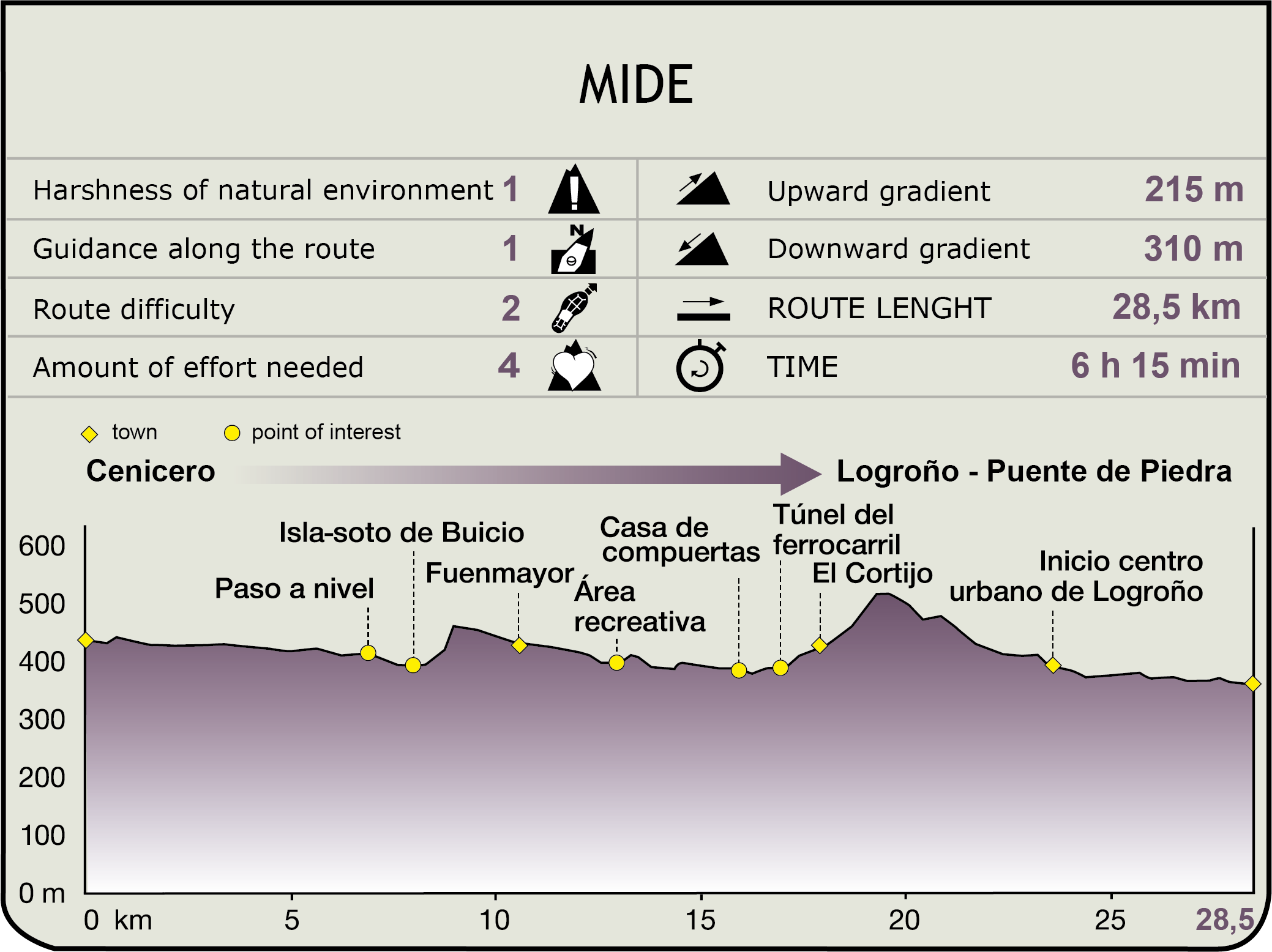
MIDE (Method for the Information of Excursions)
Featured
Further information
Logroño, capital of La Rioja
Logroño, with nearly 150,000 inhabitants, is home to half of La Rioja's population. King Alphonse VI granted the municipal charter in 1095, in 1431, King John II of Castile awarded the town charter, and in 1444 he added the title of “Very Noble” and “Very Loyal”. Since 1982, Logroño is the capital of La Rioja. In addition to the old town, parks, industrial estates, and numerous services and leisure opportunities, the city has an interesting heritage. Worthy of note are the Cathedral of Santa María la Redonda and the churches of Santa María de Palacio (12th-18th C.), Santiago El Real (16th C.) and San Bartolomé (13th-16th C.), the Palacio de los Chapiteles, the 18th century Museum of La Rioja (Casa de Espartero), the Puerta del Revellín (16th C.), Ebro and Ribera parks, the Puente de Piedra (1884), the Espolón (18th-20th C.); and the City Hall, designed by Rafael Moneo.
Ferries
Until the last third of the twentieth century, ferries were the only means of transportation for residents who wished to cross the river with their animals, tools and vehicles. This was also the case for traders, troops, travellers and pilgrims. Ferrymen were highly regarded. Their struggle with the harsh climate was of prime importance until the construction of modern bridges. The origin of these ferries can be traced back to ancient times. The jetty would be typically built in places that could be easily protected or monitored.
Virgen del Rosario Cable Ferry
For centuries, the only way to cross the river from Pradilla de Ebro to Boquiñeni (Saragossa) was by a cable ferry operated until 1964. Since the Middle Ages, the Knights Templar of Pradilla had exclusive rights to operate the ferry on the river section between these two towns and charge a fee. The Association Friends of Barca de Boquiñeni, established in 2001, built a new ferry for recreational purposes.
El Castellar Ferry
Formerly used to travel to El Castellar Mountains (Saragossa) across the river, it is now owned by the City of Torres de Berrellén. Although it no longer has a full-time ferryman, volunteers operate the ferry on special days, such as the pilgrimages to the shrine of Virgin de El Castellar (May 8th and last Sunday in September).
Candespina and Gelsa Ferries
TEven today, private ferries are the only means of transportation to access La Mejana farms in Gelsa (Saragossa), and the Candespina grove in Sobradiel (Saragossa). The latter has been equipped with a motor.
Flix and Miravet Cable Ferries
Only two cable ferries still operate in the Ebro. Both consist of a traditional wooden platform on two “llaüts” or “almadías” (rafts) drawn by a rope fastened on both sides of the river. Only one of two crossings at Flix (Tarragona) is still used by farmers. In Miravet (Tarragona), the ferry is equipped with two rudders that allow the ferrymen to use hydraulic power to operate the boat. The origin of this crossing can be traced back to the twelfth century, when a single llaüt was used. The system remains largely unchanged even today.
